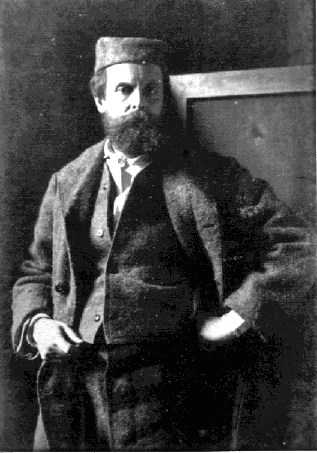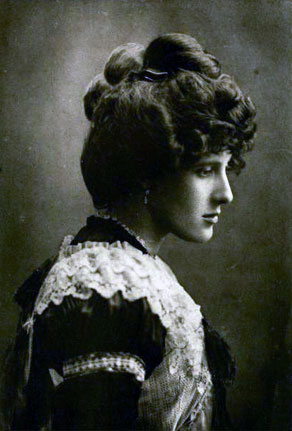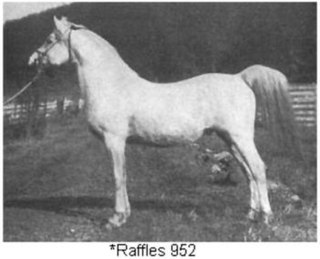Related Research Articles

The Arabian or Arab horse is a breed of horse with historic roots on the Arabian Peninsula. With a distinctive head shape and high tail carriage, the Arabian is one of the most easily recognizable horse breeds in the world. It is also one of the oldest modern breeds. Although modern DNA cannot trace breed purity in the modern population beyond 200 years, there is archaeological evidence of horses in the Middle East with landrace characteristics that resemble modern Arabians dating back 3,500 years. Throughout history, Arabian horses have spread around the world by both war and trade, used to improve other breeds by adding speed, refinement, endurance, and strong bone. Today, Arabian bloodlines are found in almost every modern breed of riding horse.

Wilfrid Scawen Blunt, sometimes spelt Wilfred, was an English poet and writer. He and his wife Lady Anne Blunt travelled in the Middle East and were instrumental in preserving the Arabian horse bloodlines through their farm, the Crabbet Arabian Stud. He was best known for his poetry, which appeared in a collected edition in 1914, and also wrote political essays and polemics. He became additionally known for strongly anti-imperialist views that were still uncommon in his time.

Anne Isabella Noel Blunt, 15th Baroness Wentworth, known for most of her life as Lady Anne Blunt, along with her husband the poet Wilfrid Blunt, was co-founder of the Crabbet Arabian Stud in England and the Sheykh Obeyd estate near Cairo. The two married on 8 June 1869. From the late 1870s, Wilfrid and Lady Anne travelled extensively in Arabia and the Middle East, buying Arabian horses from Bedouin princes such as Emir Fendi Al-Fayez and the Egyptian Ali Pasha Sherif. Among the great and influential horses they took to England were Azrek, Dajania, Queen of Sheba, Rodania and the famous Ali Pasha Sherif stallion Mesaoud. To this day, the vast majority of purebred Arabian horses trace their lineage to at least one Crabbet ancestor.
Annie Henrietta Yule, Lady Yule was a British film financier and a breeder of Arabian horses. She co-founded the British National Films Company and Hanstead Stud, and commissioned the superyachts of her day.
The British National Films Company was formed in England in 1934 by J. Arthur Rank, Lady Annie Henrietta Yule of Bricket Wood, and producer John Corfield.
The Welara is a part-Arabian pony breed developed from the Arabian horse and the Welsh pony. It was originally bred in England by Lady Wentworth at the Crabbet Arabian Stud in the early 1900s from imported Arabian stallions and Welsh pony mares. Breeding then spread throughout North America. In 1981, a breed registry was formed in the United States, and a studbook began to be published. They are used for many disciplines of English riding, and are known for their refinement, hardiness and spirit.
Sir David Yule, 1st Baronet was a Scottish businessman based in British India. The Oxford Dictionary of National Biography judged him "arguably the most important businessman in India" and quoted his obituary in The Times as "one of the wealthiest men, if not the wealthiest man, in the country".

The Crabbet Arabian Stud, also known as the Crabbet Park Stud, was an English horse breeding farm that ran from 1878 to 1972. Its founder owners, husband and wife team Wilfrid Scawen Blunt and Lady Anne Blunt, decided while travelling in the Middle East to import some of the best Arabian horses to England and breed them there. They maintained the Sheykh Obeyd estate near Cairo to facilitate this. Their daughter Judith Blunt-Lytton, 16th Baroness Wentworth carried on the stud until her death. The stud was sold up in 1971, but its bloodlines continue to influence the breed worldwide in the 21st century.

Lieutenant-Colonel Noel Anthony Scawen Lytton, 4th Earl of Lytton,, was a British Army officer, Arabian horse fancier and writer.

Judith Anne Dorothea Blunt-Lytton, 16th Baroness Wentworth, also known as Lady Wentworth, was a British peer, Arabian horse breeder and real tennis player. As the owner of the Crabbet Arabian Stud from 1917 to 1957, her influence on Arabian horse breeding was profound, with over 90 per cent of all Arabian horses in the world today carrying lines to Crabbet bloodstock in their pedigrees.

Skowronek was an Arabian stallion foaled in 1908 or 1909. He was bred by Count Józef Potocki who owned the Antoniny Stud in Poland. He was imported to England as a young horse. Upon purchase by Lady Wentworth, Skowronek became a foundation stallion at Lady Wentworth's Crabbet Arabian Stud. He was most often crossed on mares who were daughters or granddaughters of the stallion Mesaoud, another foundation stallion for Crabbet, who had been bred by Ali Pasha Sherif and imported from Egypt to England by Lady Wentworth's parents, Wilfrid and Lady Anne Blunt.

Mesaoud, an Arabian stallion, foaled 1887, was one of the foundation sires of the Crabbet Arabian Stud in England. Bred in Egypt by Ali Pasha Sherif, he was imported to England by Wilfred and Lady Anne Blunt in 1891. He is recognized as an Al Khamsa Arabian, with verifiable lineage tracing to the Bedouin of the desert.
Sheykh Obeyd was a stud farm that raised Arabian horses, located near Cairo, Egypt. It was founded by Wilfred Blunt and Lady Anne Blunt in the late 19th century, and was the home of Lady Anne following her permanent separation from Wilfred in 1906, over his ill-treatment and blatant affairs, until her death. The foundation bloodstock for Sheykh Obeyd came primarily from the breeding program of Ali Pasha Sherif, and the best animals were sent on to the Blunts' Crabbet Arabian Stud in England.
Hanstead House or Hanstead Park is a country house estate in Hertfordshire, England. Hanstead is near Bricket Wood, about three miles from Radlett and five miles from St Albans, within the green belt around London. It forms part of the civil parish of St Stephen, Hertfordshire within St Albans District Council. The park has been a stud, a college, and a corporate training centre, and is now owned by a property development firm. The current building, though in the Georgian style, dates from 1925.

Raffles was an Arabian stallion foaled in 1926 and imported to the United States by Roger Selby in 1932. Raffles was bred by Lady Wentworth of the Crabbet Arabian Stud.

Raseyn (1923–1959) was an Arabian stallion foaled in 1923 and bred by Lady Wentworth of the Crabbet Arabian Stud. After being imported into the United States by W.K. Kellogg in 1926. He was part of a large shipment of horses that Carl Schmidt, later Carl Raswan, purchased from Lady Wentworth for Kellogg's new ranch in Pomona, California.

William Robinson "W. R. " Brown was an American corporate officer of the Brown Company of Berlin, New Hampshire. He was also an influential Arabian horse breeder, the founder and owner of the Maynesboro Stud, and an authority on Arabian horses.
Andrew Yule was a businessman who founded Andrew Yule and Co.

Ruth Elizabeth "Bazy" Tankersley was an American breeder of Arabian horses and a newspaper publisher. She was a daughter of U.S. Senator Joseph Medill McCormick. Her mother was progressive Republican U.S. Representative Ruth Hanna McCormick, making Tankersley a granddaughter of Senator Mark Hanna of Ohio. Although Tankersley was involved with conservative Republican causes as a young woman, including a friendship with Senator Joseph McCarthy, her progressive roots reemerged in later years. By the 21st century, she had become a strong supporter of environmental causes and backed Barack Obama for president in 2008.

Dora Maclean was an Australian pedigree horse-breeder known for her Arabian horses. During the war she was obliged to employ women from the Australian Women's Land Army. She only employed women after that.
References
- ↑ Edwards, Elwyn Hartley (1980). A Standard guide to horse & pony breeds. McGraw-Hill. p. 53.
- ↑ TIMES, Special Correspondence of THE NEW YORK (15 July 1928). "MILLIONS INHERITED BY ENGLISHWOMEN; Miss Gladys Yule's Estate, Put at $100,000,000, Recalls Recent Large Fortunes". The New York Times. Retrieved 16 January 2022.
- ↑ "$1,000,000 in 1928 → 2022 | Inflation Calculator". www.in2013dollars.com. Retrieved 16 January 2022.
- ↑ "Lady Wentworth was unhappy when she learned Lady Yule was using Razina for purebred breeding. For the next several years, Lady Yule sent her mares to outside stallions, but did not have access to those at Crabbet.... The ice between Lady Wentworth and Lady Yule broke not long after [one particular ploy], and in 1933 Lady Yule sent all five of her Arabian mares to Crabbet for breeding." - Cadranell
- ↑ CADRANELL, R.J. (March–April 1997). "HANSTEAD HORSES". Arabian Visions.
- ↑ Archer, Rosemary; Colin Pearson; Cecil Covey (1978). The Crabbet Arabian stud: its history & influence. p. 191.
- ↑ Edwards, Gladys Brown (1969). The Arabian, war horse to show horse. Wood & Jones. p. 128.
- ↑ Archer, Rosemary (2001–2013). "The Influence of Horses of Crabbet Bloodlines on South African Arab Horse Breeding".
Three publications: written for the Namibia Arab Registry Newsletter, April 2001. Published in The Arabian Magazine, June 2010. Republished The Egyptian/Black Edition, May 2013.
{{cite journal}}: Cite journal requires|journal=(help) - 1 2 3 Cadranell
- 1 2 "Secret in huge will: Fairy tale that may come true". The Sydney Morning Herald. 3 November 1957.
- ↑ Richard Davenport-Hines, ‘Yule, Annie Henrietta, Lady Yule (1874/5–1950)’, Oxford Dictionary of National Biography, Oxford University Press, 2004; online edn, May 2006 accessed 18 Dec 2013
- ↑ "Woman leaves £4m; large bequests to friends". The Glasgow Herald. 8 July 1958.
- ↑ "ST CONGAR LAND ANNOUNCES PROPOSED HANSTEAD PARK SCHEME". Archived from the original on 24 November 2013. Retrieved 13 December 2013.
- ↑ "Hanstead House". Griggs Homes. Retrieved 1 February 2022.
- ↑ "Hanstead Livery" . Retrieved 14 December 2013.